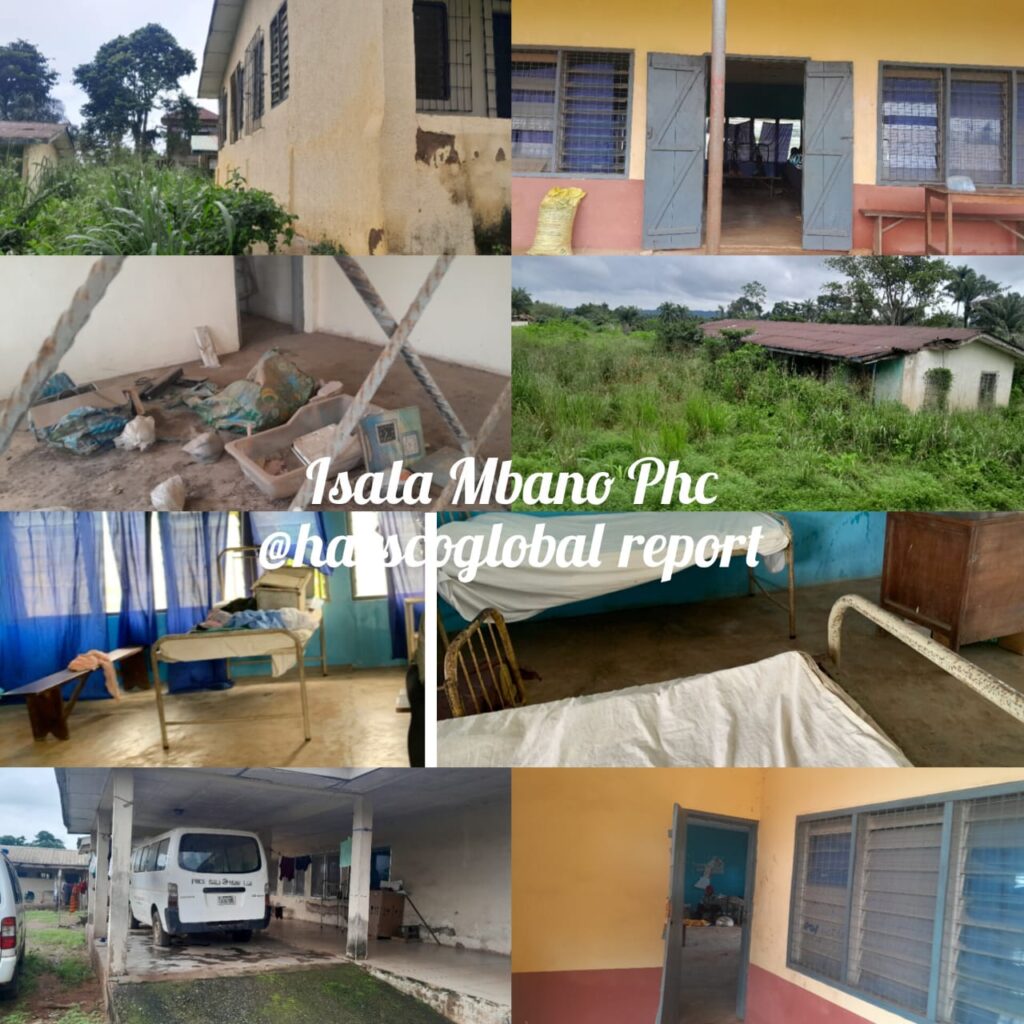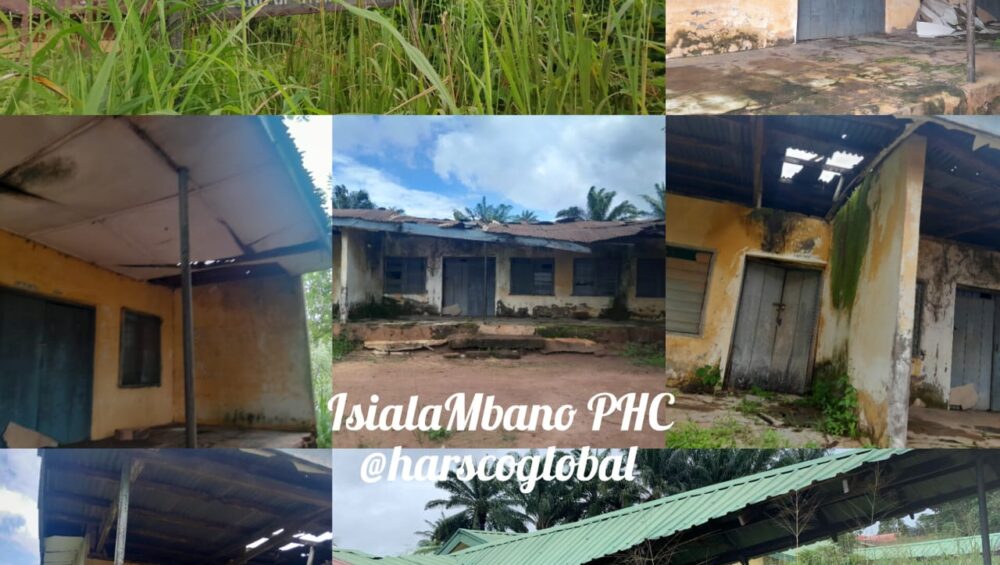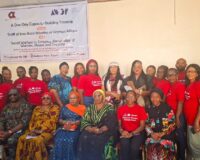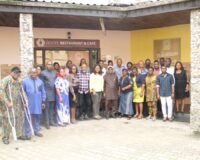By Harriet Ijeomah & Davidson Nwosu
Stepping off the narrow path into what was supposed to be a place of life-saving care felt like walking into an abandoned grove. Bushes closed in on all sides, grass almost swallowing the signpost, and for a moment, we wondered if we had taken a wrong turn. Surely, this could not be the gateway to healing. Yet here we were, standing before a health facility the community once relied on now overrun by weeds, silence, and the slow decay of neglect.
“Go there and see it yourself,” said Mrs. Chioma Agu, a mother from Ezike, Isiala Mbano, her voice tinged with both anger and relief. “God forbid that I should send my children to that kind of place. It’s a dump, not a healthcare centre. If I had waited for that maternity to treat my child, I would have buried her by now.” She spoke on January 23, recounting a near tragedy she escaped by taking her child to a private facility.

Her story lingered in our minds when, in June, BudgIT announced its Community Mapping for Primary Healthcare project. One of our team members signed up as a community champion for Isiala Mbano, an opportunity to investigate, confirm, and document the claims.
Over several weeks, we visited 15 primary health facilities: Ezike Primary Health, Umuluwe Ajirija Health Post, PHC Obiohuru, PHC Osu, Umukaku Health Centre, Model Health Care Okohia, Umunchi PHC, Anara PHC, Umuduru PHC, Ugirinna Development Health Center, Ibeme PHC, Ngwu Mba PHC, Amaraku PHC, Obollo PHC, and Maternity Health Post.
Primary Health Centres (PHCs) in Nigeria are meant to be the first point of contact with the health system, the place where common illnesses are treated, women give birth safely, children get vaccinated, and communities receive preventive care. The concept is rooted in the 1978 Alma Ata Declaration, which recognised primary health care as central to achieving “Health for All.” But in Isiala Mbano today, that vision lies in ruins.
The decay is both structural and systemic. Sixty percent of the PHCs we visited had broken roofs, unplastered walls, or no windows, some so exposed that reptiles could slip in unnoticed. A further 30 percent had decent buildings but lacked the most basic equipment. Only two Umuduru and Anara came close to meeting minimum service requirements, and even they were understaffed.
Umukaku Health Centre had ceased to exist as a functioning facility; its grounds had been turned into farmland by workers. Amaraku Health Post resembled a criminal hideout more than a clinic, with no signpost and a patient lying on the bare floor.
Staffing painted an equally grim picture. Many centres had only one Community Health Extension Worker (CHEW) doing the work of a doctor, nurse, and midwife combined. “I’m everything here,” one told us. “It’s exhausting. But who else will do it?” Others relied on interns and casual workers, with no doctors in sight. This not only compromises service quality but erodes community trust and the trust is already paper-thin.
Power supply, a lifeline for modern healthcare, was almost nonexistent. Even centres equipped with solar panels reported that they had stopped working long ago. Without electricity, vaccines spoil, deliveries are conducted in the dark, and essential equipment lies dormant. In Amaraku Health Centre, we found an elderly patient lying alone in a dim ward. When asked why she had left him unattended, the midwife replied bluntly: “I can’t kill myself.”
This collapse is happening against a backdrop of substantial public funding. Between January 2023 and July 2025, Isiala Mbano received monthly FAAC allocations ranging from ₦115 million to ₦145 million. The statutory component was consistently high, with additional inflows from VAT, Exchange Gains, and EMTL. In March 2024, allocations peaked at over ₦142 million. In July 2025, they topped ₦140 million. Yet the PHCs remain shadows of what they were meant to be.
The federal government says it is trying to reverse the decline. The Coordinating Minister of Health and Social Welfare, Prof. Ali Pate, recently announced that N260 billion had been made available for revitalising primary health care through the Basic Health Care Provision Fund (BHCPF) and other financing. The plan, he said, was to make 8,300 PHCs fully functional and expand to 17,000 over three years. But for the people of Isiala Mbano, those promises feel distant and in some cases, they have heard them before.
In communities where farming is the mainstay and hospitals are far away, the failure of PHCs is more than an inconvenience; it’s a matter of life and death. Without functional primary health care, preventable diseases go untreated, maternal deaths rise, and childhood immunisation rates fall.
The FAAC allocations suggest that resources are available. The question that remains unanswered is why so little of it is reaching the places where it is needed most.
For now, the rusted gates and empty wards of Isiala Mbano’s PHCs stand as stark monuments to a broken promise: the promise of health without care.





